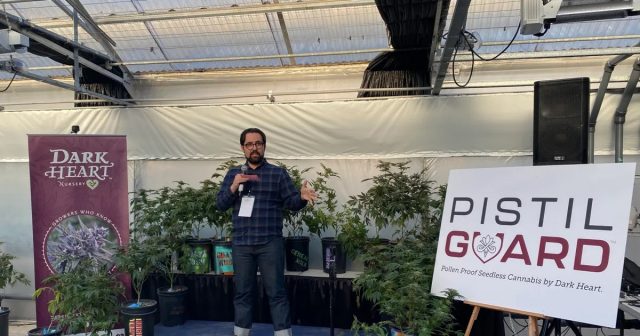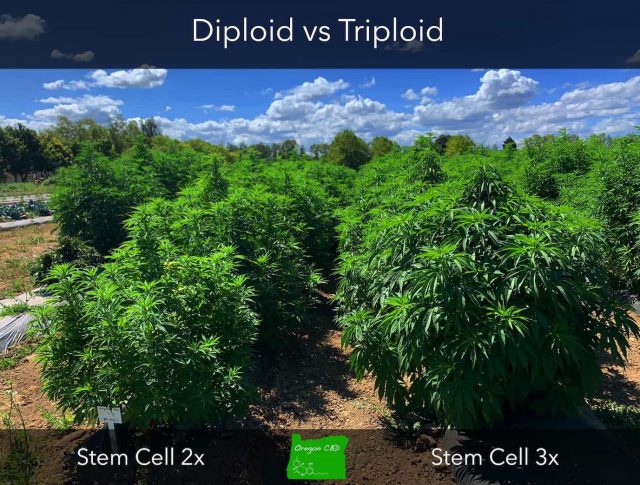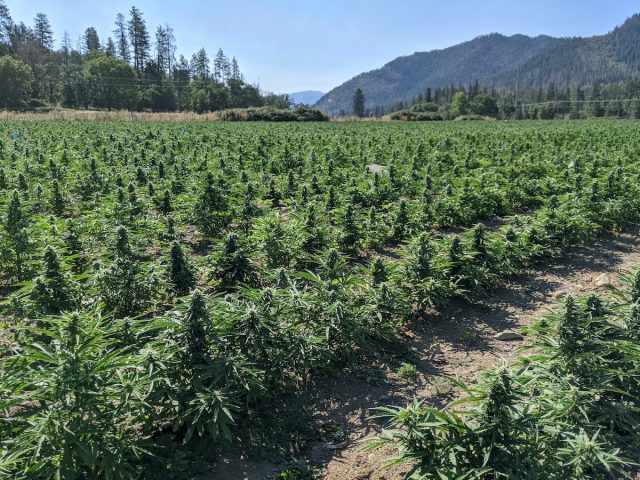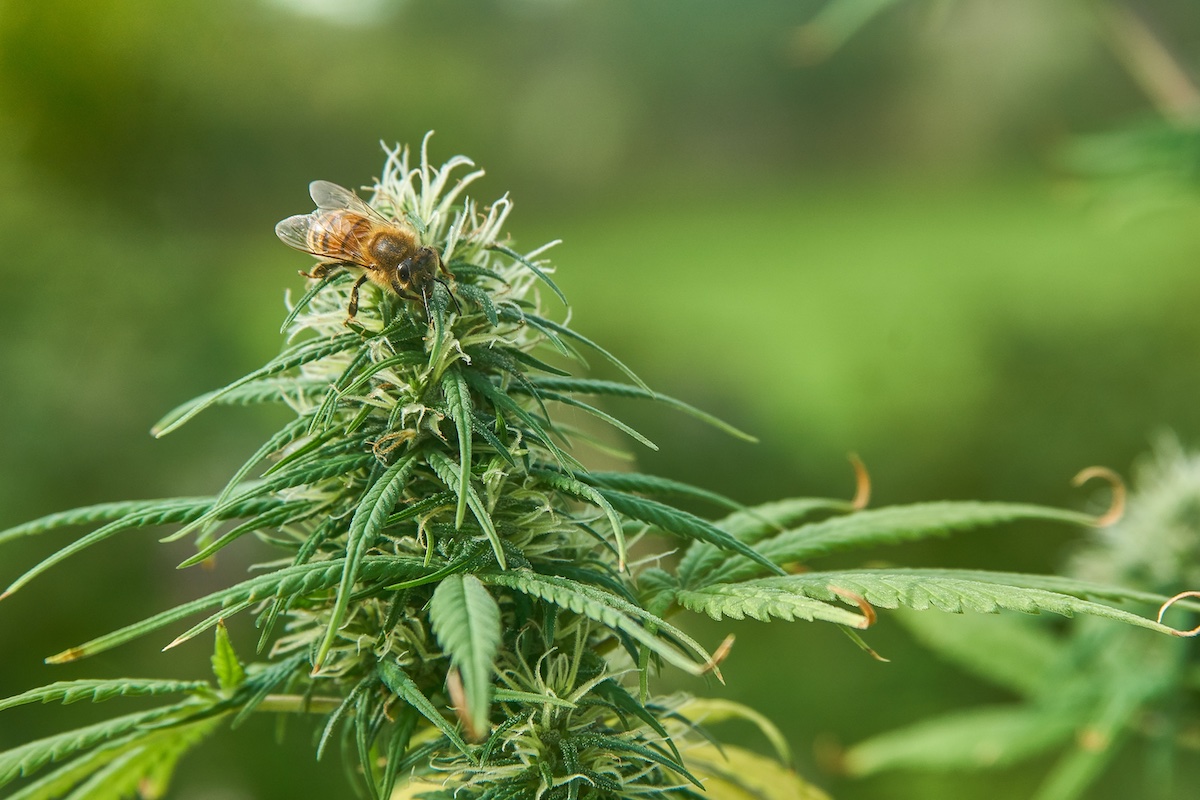What is triploid cannabis?
List of contents
Earlier this year 2022, Dark Heart Industries, one of the leading cannabis genetics companies in California, announced that it had produced the world's first triploid seedless cannabis for commercial growers. Dark Heart's 'PistilGuard' technology purportedly produces triploid cannabis seeds and clones that are essentially unable to produce seeds, even when directly exposed to pollen.
This technological innovation means that triploid cannabis can be grown on the same scale as maize or wheat, minimizing the risk of accidental cross-pollination and seed production. “The introduction of this characteristic in cannabis is a real advance that will allow higher yields, a drastic reduction in costs and better aromatic and chemical qualities of the crop. All of this leads to increased profitability,” the company said in a press release.
According to the company, the ability to grow THC-rich cannabis from sterile triploid seeds and clones that guarantee the production of seedless plants "is a huge win for growers" as pollen-proof cannabis and the benefits that offers "will help marijuana production move from artisanal cultivation to the large-scale agriculture division."

How do you get triploid plants?
Many may be confused as to what "triploid" means and how it applies to cannabis. Surprisingly, the term is quite common in the world of agriculture. Watermelons that are seedless, for example, are considered triploid watermelons. The same happens with a large number of other crops such as citrus fruits, grapes or bananas. This helps us understand that the common factor of triploid plants is that they do not have seeds. However, how does this apply to marijuana plants?
To fully understand the concept of triploid cannabis, we will have to go back a bit to the basics of cannabis genetics. We know that chromosomes carry information in the form of genes. Polyploidy occurs when DNA, instead of being grouped in pairs of chromosomes (diploid), is presented in groups of three (triploid), four (tetraploid) or more sets of chromosomes. Humans have 23 pairs of these chromosomes that make us diploid, since all of them are twinned in pairs (one from the father and one from the mother) in the nucleus of their cells. Cannabis plants, on the other hand, are also diploid with only 10 chromosomes.
However, research has shown that in cannabis, as in most plants, spontaneous mutations can occur that result in duplication of diploid genomes and lead to tetraploid (4 copies) or octoploid (8 copies) individuals and plus. Plants can even be naturally triploid, but this rarely happens.
For this reason, scientists have developed a way to create any triploid they want by simply crossing a tetraploid with a diploid. Thus, the resulting seed carries 2 chromosome copies from the tetraploid parent and 1 set from the diploid parent. This process for obtaining these types of plants is well documented and has been used to improve many other crops, particularly those where seedless characteristics, essential oil production (triploids produce 30%-50% more in oil content) of terpenes) and increased biomass (triploid hemp plants allow 20-40% percent more production compared to their diploid siblings) are valuable agronomic traits.

In search of seedless marijuana
The presence of seeds in cannabis plants decreases the density of cannabinoids and terpenes, leading to low THC production, loss of yield and decreased flower attractiveness. This is why breeders have long sought ways to dispose of cannabis seeds.
In the 1970s, growers made the first breakthrough in their drive to produce seedless cannabis by physically isolating female plants from the presence of pollen-producing males. These unpollinated female plants had higher yields and cannabinoid content than a similar female plant that would normally have been pollinated.
Growing cannabis to enjoy an individual marijuana supply is the epitome of personal growth. But with every grow comes great responsibility: your plants need protection and care to reach their full potential. And the botanical repercussions of pollination can have an irreversible impact on the life force of a cannabis plant. We explain everything you need to know about this breeding process that will influence the future of your personal cannabis grow, just as surely as the choices of parents will set the future course for their children.
Someone quickly realized that if you only produced clones from one female plant (mother plant), you could also create uniform growth of female plants. This method of clonal propagation is still the way most cannabis is grown to this day. Along the way, scientists also discovered a way to create so-called feminized seeds, capable of producing plants with a 99% chance of being female.
However, even plants grown from feminized seeds were still susceptible to accidental pollination from inside the greenhouse or from neighboring fields in outdoor cultivation. Additionally, feminized seeds can also produce phenotypically male plants, albeit in very small quantities.
And hermaphroditism, a term used to characterize a female cannabis plant that produces male flowers, also comes into play. These flowers can, in turn, form and produce pollen that can pollinate all the female plants around them. The interpretation of this is that growers still have to look for male plants and also examine female plants for male flowers, as just one of these plants can fertilize an entire crop and ruin the harvest.
Additionally, cross-pollination is also a major issue as cannabis farmland increases. Hemp and cannabis pollen can travel up to eight kilometers when carried by the wind. This means that many growers risk losing their entire yield, even with no male plants in sight.

Triploid cannabis: the solution to the pollen problem
We all know that seedless cannabis is already the gold standard in the industry and consumers value seedless cannabis flowers more. But this question must be asked: "if we can already produce cannabis without seeds, why do we need triploid cannabis?" Well, the answer can be summed up in one word: pollen. Triploid cannabis is pollen insensitive, which means that the plants do not set seeds even if they have been pollinated.
Thus, neither a single male flower nor a hemp field miles away poses a threat to inadvertent pollination. For this reason, triploid cannabis has the potential to transform cannabis production by reducing labor costs and eliminating the possibility of crop loss due to unwanted pollination. This leads directly to the ability to scale cannabis cultivation.
Beyond simply eliminating the pollen problem, triploid cannabis also has the benefit of producing a new generation of plants. This is because it is possible to selectively breed plants to choose which traits to improve. Triploid cannabis possesses three copies of each chromosome, with two donated from its parents and one additional copy. Therefore, parents can be carefully selected to supply these chromosomes based on desired traits. Triploids therefore open up numerous specialized breeding opportunities to create truly unique genetics.
Conclusion
In 2021, the total cannabis market in a country like the US was worth over $100 billion. Surprisingly, despite the number of states that had legalized the plant, the legal market represents only 25% of this total, compared to the rest that came from the black market. This is because the cost of producing legal cannabis is quite staggering, even if its dividends are in sight.
For legal producers to compete and outperform black market producers, they need tools that can lower their production costs. Triploid cannabis has the potential to help turn the tide and transform commercial cannabis production, by eliminating the risk of crop loss due to unwanted pollination events. The development of triploid seedless varieties has been a major step forward in many commercial crops, such as watermelon, banana and apples. And the same could happen with cannabis.






